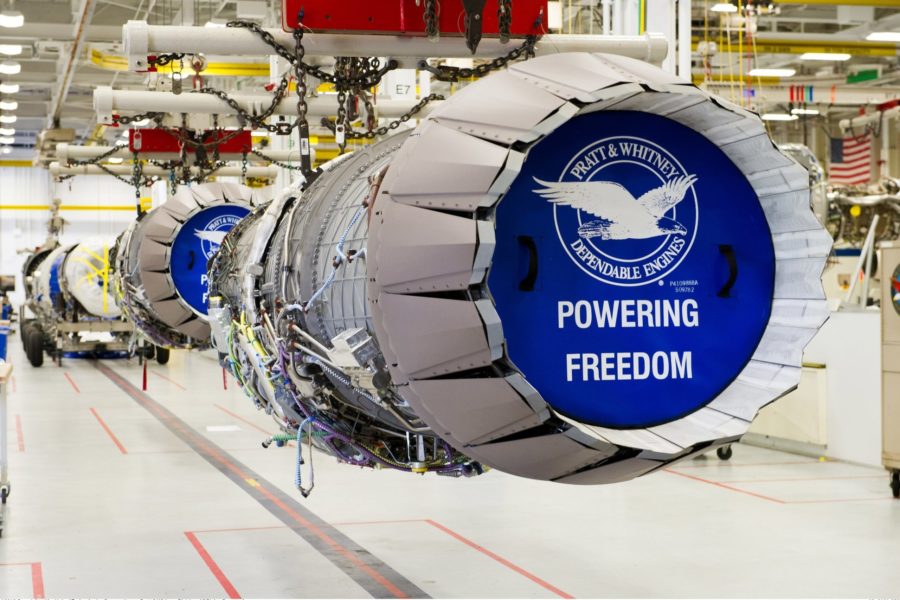The Pentagon could save $40 billion by skipping a total replacement of the F-35A fighter’s F135 engine with new adaptive engines, and should instead opt for a more modest and affordable upgrade that could equip the fleet more quickly, Pratt & Whitney officials argued Dec. 13 in a briefing with reporters.
“We believe the core upgrade will provide $40 billion in savings” across the future F-35 program, Pratt F135 Vice President Jen Latka said.
The company arrived at that figure by totaling all possible costs, from development of the new engine to a new, parallel production and sustainment enterprise, new parts, tools, maintenance equipment, and higher production unit costs due to a heavier powerplant.
Pratt’s preferred solution is the Engine Core Upgrade, or ECU—previously known as the Enhanced Engine Package, or EEP—which Latka said would cost $2.4 billion to fully develop, versus $6.7 billion to develop a variant of new adaptive engines prototyped by Pratt and GE Aerospace.
The rest of the cost avoidance would result from not setting up a second—in Latka’s words, “duplicative”—production line and logistics train, since, she asserted, the Navy, Marine Corps, and many allies could not use the new engine, and would continue to depend on the existing support system.
The F135 is also fully tested and proven, whereas the new engines are not, and that increases the risk of delays and higher costs, Latka contended.
The approach would ensure Pratt would retain its lock on the F-35 engine market, whereas if the new engine is selected, the company could either lose or share that work with GE. For its part, GE insists that moving on to the new engines is important to keep the F-35 fully capable, to preserve a healthy defense industrial base, and is an affordable option.
Pratt received a $115 million contract Dec. 2 to develop upgrade options for the F135 in greater detail, but that contract does not rule out adoption of an adaptive engine for the requirement.
Air Force officials have said they plan to decide on whether to pursue either a new engine or an upgrade of the F135 by the end of calendar 2022. Funding would start in the fiscal 2024 budget, now being drawn up.
The ECU would also mean quicker fielded capability, Latka said, asserting that the ECU could equip 24 squadrons by 2030, versus only two squadrons by that year using an adaptive engine. She said the ECU could deliver about seven percent more thrust and twice the cooling power of the current F135, using a new Emergency Power and Cooling System (EPACS) developed by Collins Aerospace.
The Block 4 F-35 will need more power, both for performance and to run and cool all the new equipment it will carry. Pratt was comparing its preferred ECU approach with replacing it using a new engine derived from the Adaptive Engine Transition Program.
Under the AETP—a technology effort intended to spark a significant step upgrade in fighter engine performance and efficiency—GE Aerospace created the XA-100 while Pratt developed the XA-101. Both AETP powerplants use a “third stream” of bypass air that serves to both cool the engine and make it more efficient and adaptable to either cruise or quick demands for high thrust. Both engines are heavier than the F135 but both would sharply improve the F-35’s performance.
The two companies claimed their AETP engines could improve the F-35’s range by 25-30 percent, generate a lot more electricity for jammers and directed-energy weapons, and increase available thrust.
Last year, Congress said it wanted to see AETP engines in the F-35 by 2027, but Pratt said that timeline is too ambitious. It could start installing ECUs in the F-35 in 2028, Latka said.
She also emphasized that the only part that would be changed is the core.
“We’re not touching the front end” or the exhaust system, Latka said.
Latka said Pratt could potentially port “almost all” of its AETP technology to the F135 core upgrade, but, “that’s not necessary, and it creates a tremendous amount of risk. So we’re being pretty limited in terms of the scope” of the upgrade.
Latka also said that with just a little more work, the ECU will be at “Technology Readiness Level Six” next year. That means it’s mostly mature technology with little developmental risk.
John Niemyer, F135 chief engineer, said the firm has “selected a subset of the AETP technologies” to go into the ECU, but he could not describe them in detail, except to say that some of the third-stream bypass technology is being fitted for a two-stream engine.
Pratt’s numbers are dependent on its own assessment of F135 improvement or replacement options. It made a formal study of options for the Air Force in the spring.
The Air Force has not signaled a preference for how it wants to meet the increased power needs of the F-35. The Joint Program Office has said that if the Air Force wants the new engine, it will have to pay the development and sustainment costs on its own, since the program mantra is “you have to pay to be different.”
Air Force Secretary Frank Kendall has said he’s spoken with Navy Secretary Carlos Del Toro about using the AETP in Navy and Marine F-35s as well—and sharing the attendant cost—but has not reported how Del Toro has responded.
GE Aerospace insists the AETP engines could also be made to fit the F-35B and C models without sacrificing any of their performance or mandating significant structural changes.
Latka, meanwhile, said the shortage of F135 power modules that left a number of F-35s without engines last year has been “completely recovered. … There is no power mod shortage anymore.” She said “we’re actually far exceeding the program’s objectives” in terms of what was designed and funded at the program outset, “so this is really great news.”
